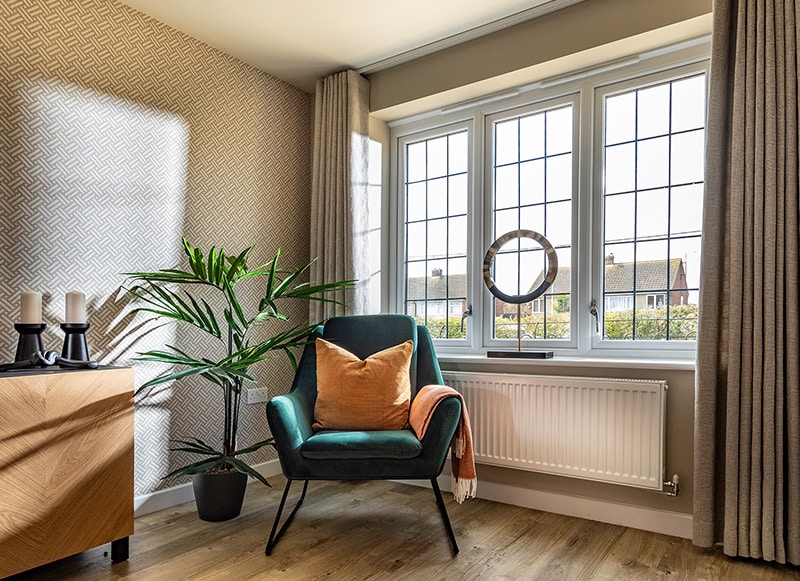The Government published its White Paper, ‘Fixing Our Broken Housing Market’ at the beginning of this month [Feb.]. Although it’s hardly revelatory in citing the UK’s failure to build new homes as the origin of an increasingly unsustainable housing market, the way it sets out to address the challenge may not only redefine the new build sector but how window and door companies engage with it.
The authors of the paper are succinct in their analysis: ‘The problem is threefold: not enough local authorities planning for the homes they need; house building that is simply too slow; and a construction industry that is too reliant on a small number of big players’.
And it’s this last point, alongside an ambitious commitment to build more than 250,000 each year, that is perhaps most significant for the window and door industry. Red tape, delays in planning and nimbyism are all cited as contributing factors to the present unaffordability of UK homes.
But it’s the Government’s conclusion that the market has become dominated by a dozen or so big housebuilders that is the key driver of its policy. “Government figures show just how dominant a handful of housebuilders have become since the 2008 credit crunch and recession”, says John Leary, Sales and Marketing Director, Emplas.
He continues: “In 2008 small builders, those constructing 1-100 units per year accounted for 28% of the market. Those building 101-2000 units 40% and volume builders constructing 2000 or more homes per year accounted for 31%.
“If you roll that forward to 2015, volume builders dominated the market building 59% of all new homes while the share of medium sized builders had dropped to 29% and smaller builders, just 12%.
“This, the Government argues, has led to a massive over-reliance on just a few big housebuilders, who haven’t perhaps always been quite as enthusiastic as they might have been – depending on house prices – to convert land banks into new properties.
“The other issue is that where sites have been developed, they have tended to be large developments or none at all.”
The decline of small builders since the recession is also apparent in the registration of new homes. The number of homes registered by small builders down by more than half, from 44,000 in 2007 to 18,000 in 2015.

To this end the Government has unveiled two funding packages worth billions to housebuilders The Communities Secretary said that he expects the £3billion Home Builders Fund to deliver 225,000 homes as the Government pursues its increasingly ambitious target of building 1million new homes by 2020.
“What’s really notable is that this funding is targeted at small and medium sized builders”, continues Leary, “which alongside a commitment to build homes on public land and smaller brownfield sites, should make small and medium sized builders a good hunting ground for installers.”
This is another key point in the white paper. The authors of the report write: ‘Small and medium-sized house- builders regularly cite land, planning and finance as the major barriers to expansion. We have already simplified the planning processes, and changes such as the introduction of permission in principle will remove some of the uncertainty for smaller builders when considering land options’, it says.
This focus on smaller sites is a key element in the Government’s strategy. Leary highlights the fact that as well as providing a level of ‘in-fill’, it is also encouraging individual and private builds. “Smaller developments tend to offer higher margin opportunities”, he says. “With incentives to encourage small builders but also individual builds, aesthetics and foiled products assume new importance alongside energy efficiency.”
According to The Window, Door and Conservatory Markets in Housing in Great Britain, by Palmer Market Research, foils and colour are taking a growing share of the PVC-U market. This argues that where as in 2013 standard white finishes accounted for 88% of PVC-U windows sold, in 2015 this had dropped to 81%.The report suggests sales of woodgrain finishes increased from 3% to 6% and sales of colour finishes from 9% to 12% over the same period.
This, it says, is also reflected in new build. The report highlighting the fact that while since 2000, the volume new build market has fallen by 14% the value market has risen by 47%. “It’s easy to assume that new build is purely driven by price but margins have increased significantly”, says Leary. “It’s not unreasonable to expect this to continue as self and private builders as well as smaller develops specify higher value products.”
Emplas has recently announced the expansion of its ex-stock colour range, cutting lead times and reducing costs as it builds a new offer, designed to support installers in tapping into growing end-user demand for premium foiled finishes. It means that foiled Cream, Anthracite Grey, Anthracite Grey on White, Black Brown, and Black Brown on White are now available as ex-stock standard colours in lead times of 10 days or less.
This builds upon its core offer in Profile 22’s Optima in Sculptured, Chamfered and now the Flush Casement Window. A six chamber outer-frame and five chamber sash (four chambers for flush casement), mean the 70mm system achieves U-values as low as 0.9W/m2K and an A++ WER. “If you take Optima, and the U-values that it delivers, plus ex-stock foils on 10-days or less, it’s a pretty strong offer. Demand for the new Optima Flush Casement Window in Anthracite Grey has been particularly high” says Leary.
He concludes: “If government policy delivers and we see, as we hope, a growing number of starts in new build, including smaller developments and private builds, new build could be a major source of opportunity in the run through to 2020.”
For more information visit www.emplas.co.uk , email [email protected] or call 01933 674880.
